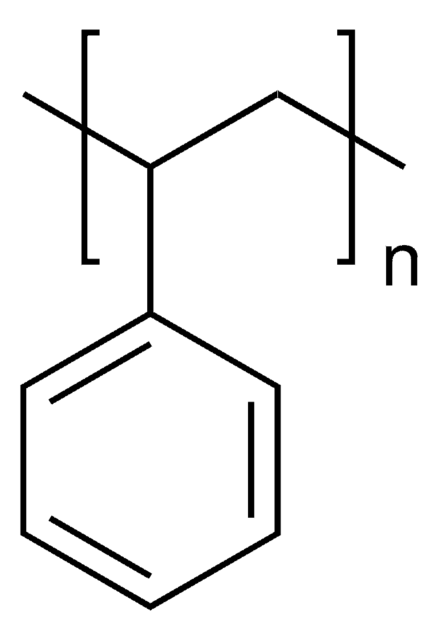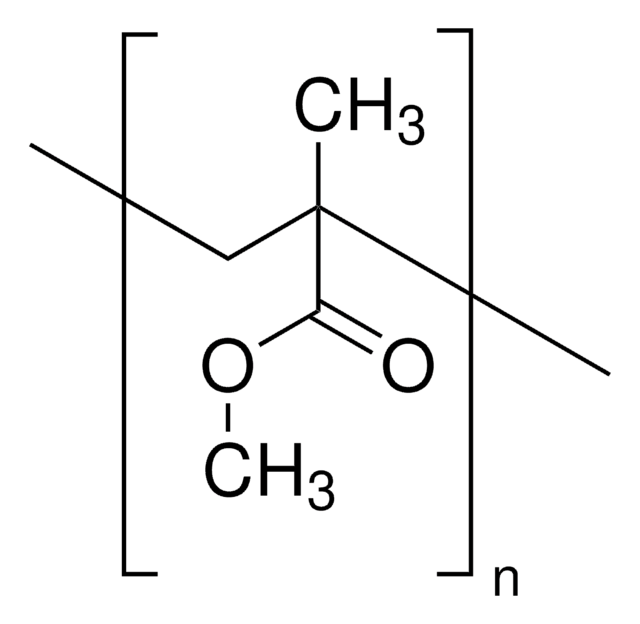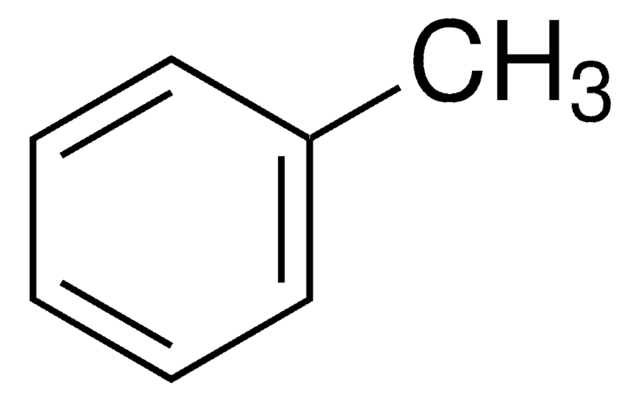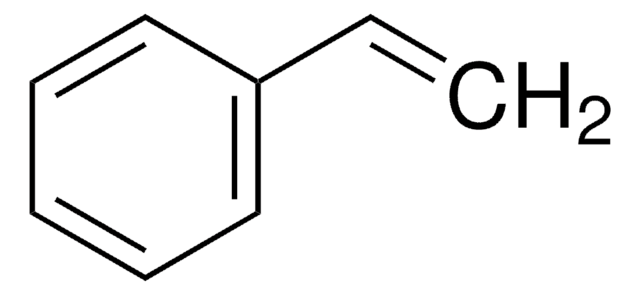182427
Polystyrene
average Mw ~280,000 by GPC
Synonym(s):
PS
Sign Into View Organizational & Contract Pricing
All Photos(2)
About This Item
Linear Formula:
[CH2CH(C6H5)]n
CAS Number:
MDL number:
UNSPSC Code:
12162002
PubChem Substance ID:
NACRES:
NA.23
Recommended Products
form
beads or pellets
Quality Level
mol wt
average Mw ~280,000 by GPC
refractive index
n20/D 1.5916
transition temp
Tg 100 °C
density
1.047 g/mL at 25 °C
InChI
1S/C8H8/c1-2-8-6-4-3-5-7-8/h2-7H,1H2
InChI key
PPBRXRYQALVLMV-UHFFFAOYSA-N
Looking for similar products? Visit Product Comparison Guide
Related Categories
General description
Polystyrene is a high molecular weight aromatic synthetic polymer madefrom the polymerization of styrene. It is a hydrophobic durable thermoplasticwidely used in food containers, packaging foam, and construction materials dueto its good mechanical properties and low cost.
Application
Polystyrene can be added to nanocatalyst suspension to prepare a polystyrene-photocatalyst thick film. This film can be used as a photoanode in an airlift photocatalytic fuel cell (APFC).
Polystyrene can be used as a precursor to prepare graphene film and 3D graphene sponges by pyrolysis under argon atmosphere. The filmogenic property of polystyrene can be exploited to prepare 3D graphene sponges with uniform pore sizes.
It can also be used to prepare dyed polystyrene (PS) film for routine dosimetry in radiation processing. Dyed PS film has high post-irradiation stability.
Polystyrene can be used as a precursor to prepare graphene film and 3D graphene sponges by pyrolysis under argon atmosphere. The filmogenic property of polystyrene can be exploited to prepare 3D graphene sponges with uniform pore sizes.
It can also be used to prepare dyed polystyrene (PS) film for routine dosimetry in radiation processing. Dyed PS film has high post-irradiation stability.
Storage Class Code
11 - Combustible Solids
WGK
WGK 3
Flash Point(F)
Not applicable
Flash Point(C)
Not applicable
Personal Protective Equipment
dust mask type N95 (US), Eyeshields, Gloves
Certificates of Analysis (COA)
Search for Certificates of Analysis (COA) by entering the products Lot/Batch Number. Lot and Batch Numbers can be found on a product’s label following the words ‘Lot’ or ‘Batch’.
Already Own This Product?
Find documentation for the products that you have recently purchased in the Document Library.
Customers Also Viewed
Alejandra Rendón-Patiño et al.
Nanomaterials (Basel, Switzerland), 9(1) (2019-01-19)
Polystyrene as a thin film on arbitrary substrates or pellets form defective graphene/graphitic films or powders that can be dispersed in water and organic solvents. The materials were characterized by visible absorption, Raman and X-ray photoelectron spectroscopy, electron and atomic
Hui Xia et al.
Journal of colloid and interface science, 376(1), 322-326 (2012-03-27)
The aggregation kinetics of particles in dense polystyrene latex suspensions is studied by low-coherence fiber optic dynamic light scattering. Low-coherence fiber optic dynamic light scattering is used to measure the hydrodynamic radius of the aggregates. The aggregation kinetics data obtained
Harikrishnan Narayanan Unni et al.
Electrophoresis, 30(5), 732-741 (2009-03-05)
This study reports a theoretical and experimental study on the irreversible deposition of colloidal particles from electrokinetic microfluidic flow. The electrokinetic particle transport model presented in this study is based on the stochastic Langevin equation, incorporating the electrical, hydrodynamic, Derjaguin-Landau-Verwey-Overbeek
Liang Zhang et al.
Journal of colloid and interface science, 353(2), 557-561 (2010-10-30)
Reported are adsorption isotherms for guar and hydroxypropyl guar (HPG), with and without the presence of borate ions, onto surfactant free anionic polystyrene latex. Guar and HPG formed adsorbed monolayers on the hydrophobic latex. The presence of borate ions converted
Katherine Sarlo et al.
Toxicology, 263(2-3), 117-126 (2009-07-21)
Understanding tissue distribution and clearance of nanomaterials following different routes of exposure is needed for risk assessment. F344 female rats received single or multiple exposures to 20 nm, 100 nm or 1000 nm latex fluorospheres by intravenous (i.v.) injection or
Our team of scientists has experience in all areas of research including Life Science, Material Science, Chemical Synthesis, Chromatography, Analytical and many others.
Contact Technical Service


